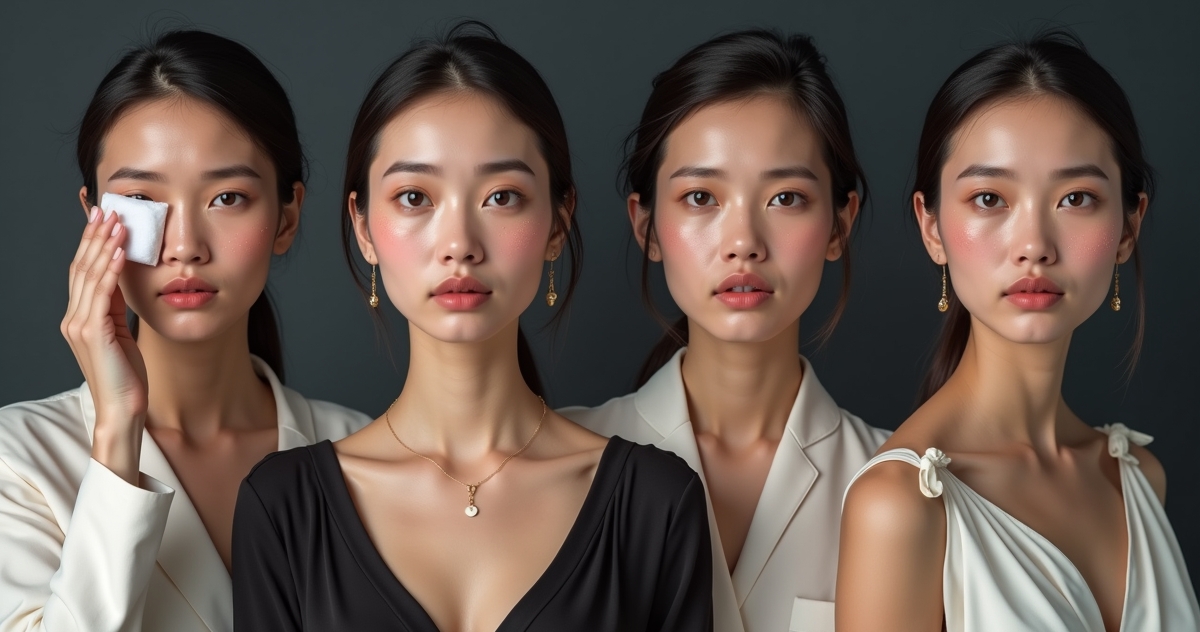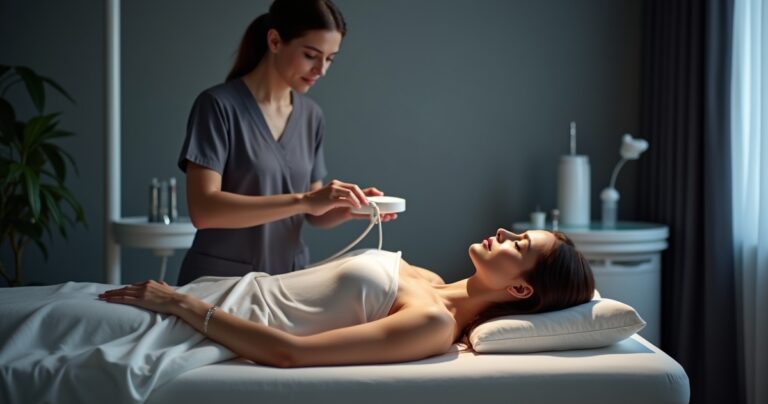What Causes Lumps After Blepharoplasty and How to Treat
Understanding Blepharoplasty and Post-Surgical Lumps
What is Blepharoplasty
Blepharoplasty, commonly known as eyelid surgery, is a procedure aimed at improving the appearance of the eyelids. It can be performed on the upper lids, lower lids, or both. This surgery is often sought for cosmetic reasons, but it can also address functional issues such as impaired vision due to droopy eyelids. The procedure involves the removal or repositioning of excess skin, muscle, and sometimes fat, to create a more youthful and rested appearance.
- Purpose : Cosmetic enhancement and functional improvement.
- Procedure : Involves removal or repositioning of skin, muscle, and fat.
- Common Areas : Upper and lower eyelids.
Common Outcomes of Eyelid Surgery
Post-surgery, patients can expect some swelling and bruising, which are normal parts of the healing process. However, some individuals may experience lumps or bumps, which can be concerning. These lumps are often temporary and resolve as the healing progresses. Understanding the common outcomes helps in setting realistic expectations and managing post-operative care effectively.
- Swelling and Bruising : Normal and expected.
- Temporary Lumps : Often resolve with time.
- Healing Process : Varies among individuals.
Incidence of Post-Blepharoplasty Lumps
According to a study published in the National Center for Biotechnology Information, lumps after blepharoplasty are not uncommon. The incidence varies depending on several factors, including the surgical technique used and individual healing responses. Awareness of this possibility can help patients prepare mentally and physically for the recovery process.
- Factors Influencing Incidence : Surgical technique, individual healing.
- Patient Awareness : Important for managing expectations.
What Causes Lumps After Blepharoplasty and How to Treat
Surgical Trauma and Swelling
Surgical trauma is a primary cause of swelling and lump formation after blepharoplasty. The body’s natural response to surgery is inflammation, which can lead to temporary lumps. These lumps are usually part of the normal healing process and tend to subside as the inflammation decreases.
- Inflammation : Body’s natural response to surgery.
- Temporary Lumps : Part of healing.
- Resolution : Lumps often subside with reduced inflammation.
Hematoma Formation
A hematoma is a collection of blood outside of blood vessels, which can occur after surgery. It can cause noticeable lumps and may require medical intervention if it does not resolve on its own. Hematomas are more common in patients who have bleeding disorders or those taking blood-thinning medications.
- Definition : Collection of blood outside vessels.
- Risk Factors : Bleeding disorders, blood thinners.
- Intervention : May require medical attention.
Scar Tissue Development
Scar tissue can form as part of the healing process, leading to lumps. This is a natural response as the body repairs itself, but excessive scar tissue can cause noticeable bumps. Treatments such as massage or steroid injections may be recommended to reduce scar tissue formation.
- Healing Response : Natural scar formation.
- Excessive Scarring : Can cause lumps.
- Treatment Options : Massage, steroid injections.
Fat Repositioning Complications
During blepharoplasty, fat may be repositioned to achieve the desired aesthetic result. However, complications can arise if the fat is not properly placed, leading to lumps. These lumps may require additional surgical intervention to correct.
- Procedure : Fat repositioning.
- Complications : Improper placement can cause lumps.
- Correction : May need further surgery.
Types of Lumps Following Eyelid Surgery
Milia
Milia are small, white cysts that can appear on the skin after surgery. They are caused by trapped keratin and are generally harmless. Milia often resolve on their own, but they can be removed by a dermatologist if necessary.
- Appearance : Small, white cysts.
- Cause : Trapped keratin.
- Resolution : Often self-resolving.
Suture Granulomas
Suture granulomas are small lumps that form around sutures used during surgery. They occur when the body reacts to the suture material. These lumps are usually benign and can be treated with minor surgical removal if they do not resolve naturally.
- Cause : Reaction to suture material.
- Nature : Benign lumps.
- Treatment : Minor surgical removal if needed.
Cysts
Cysts can develop as a result of blocked glands or ducts during the healing process. They are typically filled with fluid and can vary in size. While some cysts resolve on their own, others may require drainage or surgical removal.
- Formation : Blocked glands or ducts.
- Contents : Fluid-filled.
- Management : Drainage or removal if persistent.
Retained Fat Pads
Retained fat pads occur when fat is not adequately removed or repositioned during surgery. This can lead to noticeable lumps that may require corrective surgery. Proper surgical technique is crucial to prevent this complication.
- Cause : Incomplete fat removal or repositioning.
- Appearance : Noticeable lumps.
- Solution : Corrective surgery may be needed.
Diagnosing Post-Blepharoplasty Lumps
Physical Examination
A thorough physical examination by a qualified surgeon is the first step in diagnosing lumps after blepharoplasty. The surgeon will assess the size, location, and characteristics of the lumps to determine the appropriate course of action.
- Assessment : Size, location, characteristics.
- Initial Step : Physical examination by a surgeon.
- Purpose : Determine treatment plan.
Imaging Studies
In some cases, imaging studies such as ultrasound or MRI may be necessary to evaluate the lumps further. These studies provide detailed images that can help identify the underlying cause of the lumps and guide treatment decisions.
- Types : Ultrasound, MRI.
- Purpose : Detailed evaluation.
- Guidance : Helps in treatment planning.
Biopsy (When Necessary)
A biopsy may be performed if there is uncertainty about the nature of the lumps. This involves taking a small sample of tissue for analysis. Biopsies are typically reserved for cases where there is a concern about malignancy or unusual growths.
- Procedure : Tissue sample analysis.
- Indication : Uncertainty about lump nature.
- Concern : Malignancy or unusual growths.
Treatment Options for Blepharoplasty Lumps
Conservative Management
Conservative management involves non-invasive treatments such as massage, warm compresses, and observation. These methods are often effective for minor lumps that are expected to resolve on their own.
- Methods : Massage, warm compresses, observation.
- Effectiveness : For minor lumps.
- Goal : Promote natural resolution.
Medication Therapies
Medications such as corticosteroids may be prescribed to reduce inflammation and promote healing. These medications can be administered orally or through injections, depending on the severity of the lumps.
- Types : Corticosteroids.
- Administration : Oral or injections.
- Purpose : Reduce inflammation, promote healing.
Surgical Intervention
Surgical intervention may be necessary for persistent or problematic lumps. This can involve the removal of scar tissue, drainage of cysts, or correction of fat repositioning issues. Surgery is typically considered when other treatments have failed.
- Indication : Persistent or problematic lumps.
- Procedures : Scar removal, cyst drainage, fat correction.
- Consideration : When other treatments fail.
Preventing Lumps After Blepharoplasty
Choosing an Experienced Surgeon
Selecting a skilled and experienced surgeon is crucial in minimizing the risk of post-operative lumps. An experienced surgeon will use precise techniques to reduce trauma and ensure proper healing.
- Importance : Minimizes risk of lumps.
- Criteria : Skill and experience.
- Outcome : Better surgical results.
Following Post-Operative Instructions
Adhering to post-operative care instructions is essential for optimal healing. These instructions may include guidelines on activity restrictions, wound care, and medication use.
- Guidelines : Activity restrictions, wound care, medication.
- Role : Essential for healing.
- Compliance : Leads to better outcomes.
Proper Wound Care
Proper wound care is vital in preventing infection and promoting healing. This includes keeping the surgical area clean, applying prescribed ointments, and attending follow-up appointments.
- Components : Cleanliness, ointments, follow-ups.
- Prevention : Reduces infection risk.
- Promotion : Enhances healing.
Recovery Timeline and Expectations
Immediate Post-Operative Period
In the immediate post-operative period, patients can expect swelling, bruising, and some discomfort. These symptoms are normal and typically subside within the first week. Following the surgeon’s instructions during this time is crucial for a smooth recovery.
- Symptoms : Swelling, bruising, discomfort.
- Duration : First week.
- Instructions : Follow surgeon’s guidelines.
Weeks 1-4 After Surgery
During weeks 1-4, most of the swelling and bruising should resolve. Patients may notice gradual improvements in the appearance of their eyelids. It’s important to continue following post-operative care instructions to ensure proper healing.
- Resolution : Swelling and bruising.
- Improvements : Gradual appearance changes.
- Care : Continue following instructions.
Long-Term Results and Potential Complications
Long-term results of blepharoplasty can be very satisfying, with a more youthful and refreshed appearance. However, potential complications such as persistent lumps or asymmetry may occur. Regular follow-up with the surgeon can help address any concerns.
- Results : Youthful, refreshed appearance.
- Complications : Persistent lumps, asymmetry.
- Follow-Up : Important for addressing concerns.
When to Seek Medical Attention
Signs of Infection
Signs of infection after blepharoplasty include increased redness, swelling, pain, and discharge from the surgical site. If any of these symptoms occur, it’s important to contact the surgeon promptly for evaluation and treatment.
Persistent or Worsening Lumps
If lumps persist or worsen over time, it may indicate an underlying issue that requires medical attention. Consulting with the surgeon can help determine the cause and appropriate treatment.
Vision Changes
Any changes in vision following blepharoplasty should be reported to the surgeon immediately. Vision changes can indicate complications that need urgent evaluation and management. Chest workouts elevate your upper body strength and help build bigger pectoral muscles Abdominoplasty recovery aches Patients may feel sore and uncomfortable in their stomach area for several weeks after the surgery This discomfort is normal and will gradually decrease as the body heals from
Dr Alexandre’s Approach to Treating Blepharoplasty Lumps
Personalized Treatment Plans
Dr Alexandre emphasizes personalized treatment plans tailored to each patient’s unique needs. This approach ensures that the most effective and appropriate treatments are used for optimal results.
Advanced Techniques for Lump Removal
Utilizing advanced techniques, Dr Alexandre is able to effectively address and remove lumps that may occur after blepharoplasty. These techniques minimize trauma and promote faster healing.
Patient Testimonials
Many patients have shared positive testimonials about their experiences with Dr Alexandre, highlighting the successful outcomes and compassionate care they received during their treatment journey.
FAQ’s
How long do bumps last after eyelid surgery?
Bumps after eyelid surgery typically last for a few weeks as the body heals. However, the duration can vary depending on individual healing responses and the nature of the lumps.
Can you massage lumps after blepharoplasty?
Massaging lumps after blepharoplasty can help reduce their size and promote healing. It’s important to follow the surgeon’s guidance on when and how to perform massage safely.
What causes hardness after blepharoplasty?
Hardness after blepharoplasty is often caused by scar tissue formation. This is a normal part of the healing process, but excessive scar tissue may require treatment to soften the area.
How do you get rid of bumps after eyelid surgery?
Getting rid of bumps after eyelid surgery may involve conservative treatments like massage and warm compresses. In some cases, medication or surgical intervention may be necessary for resolution.








